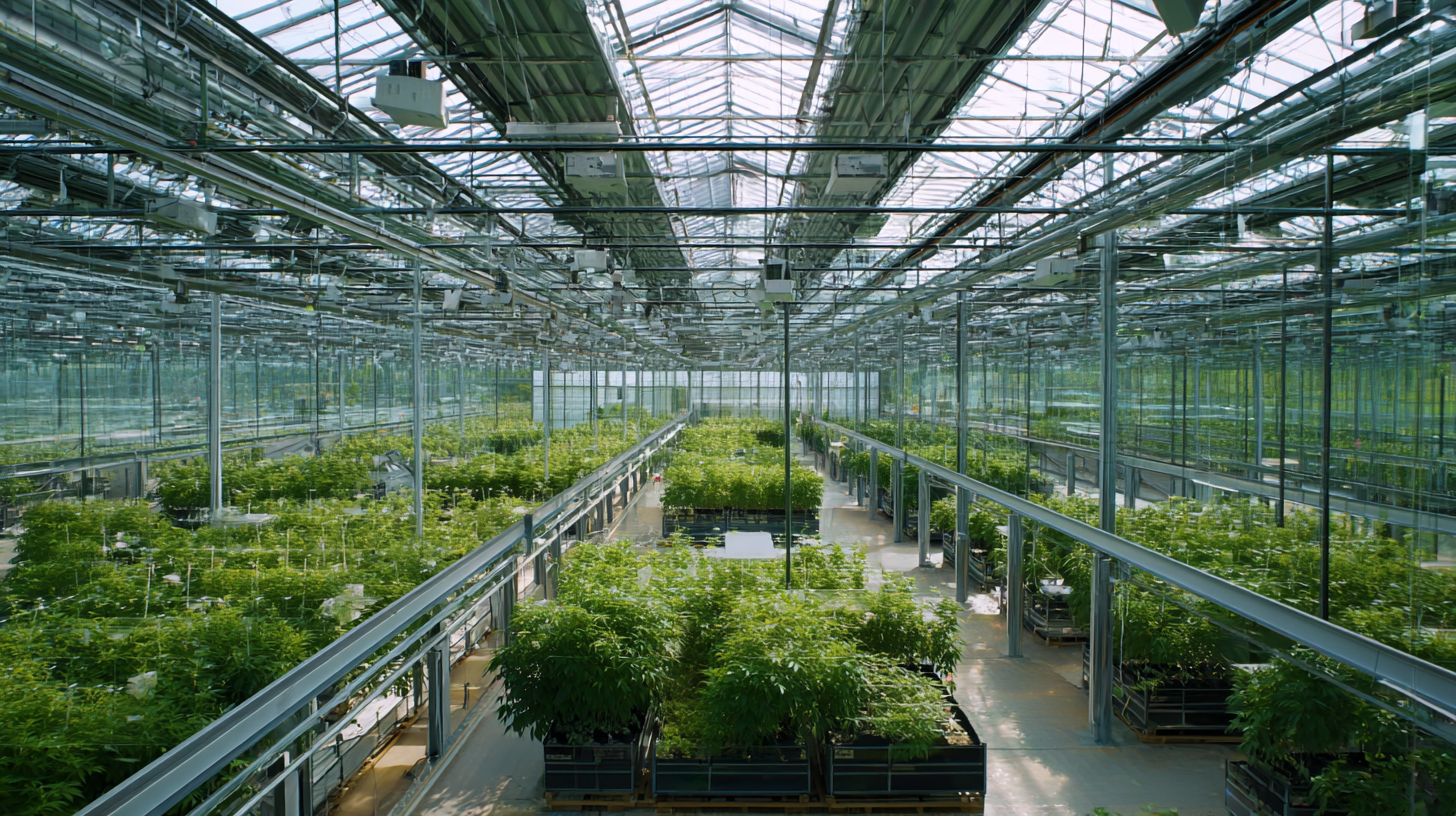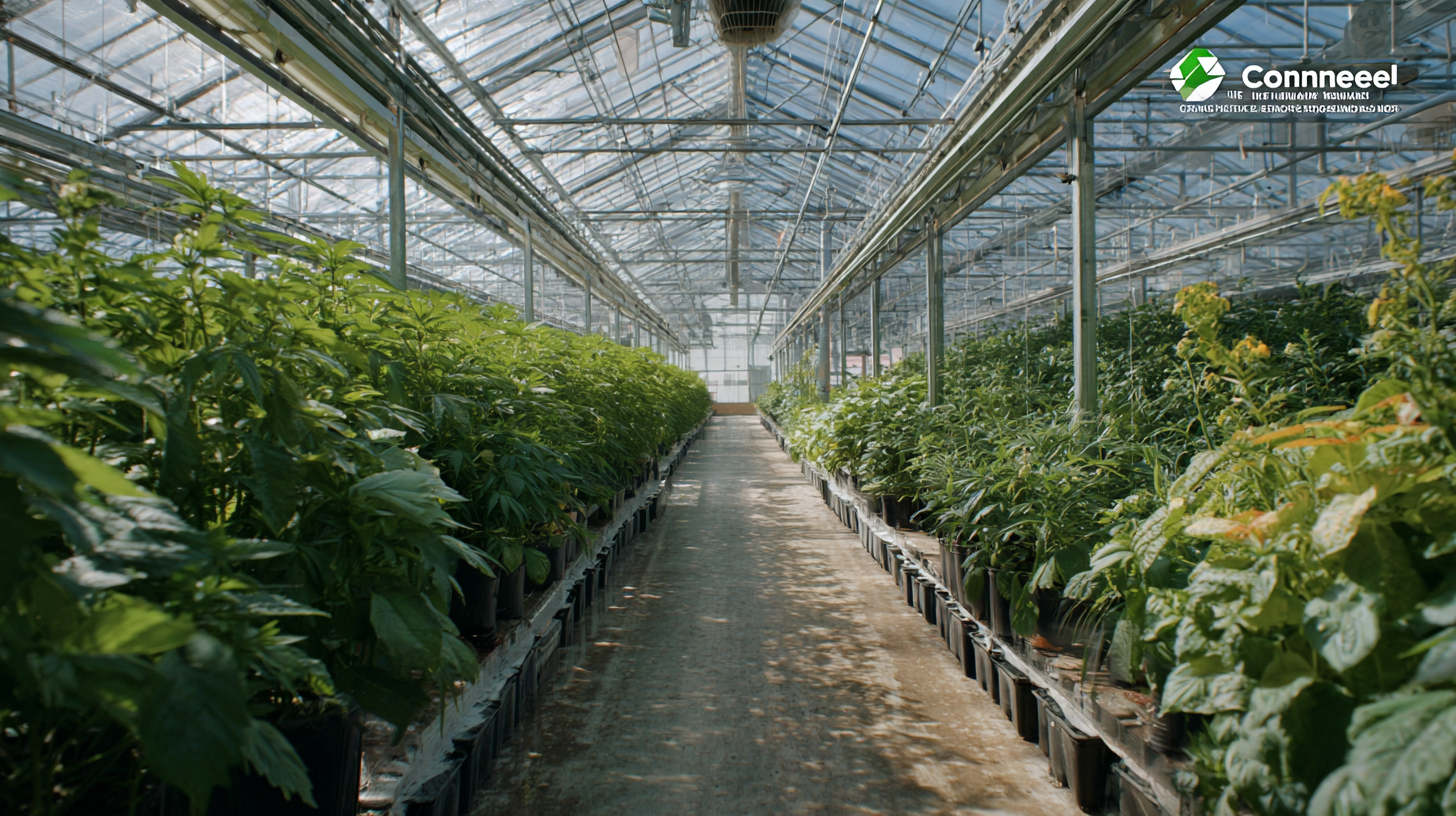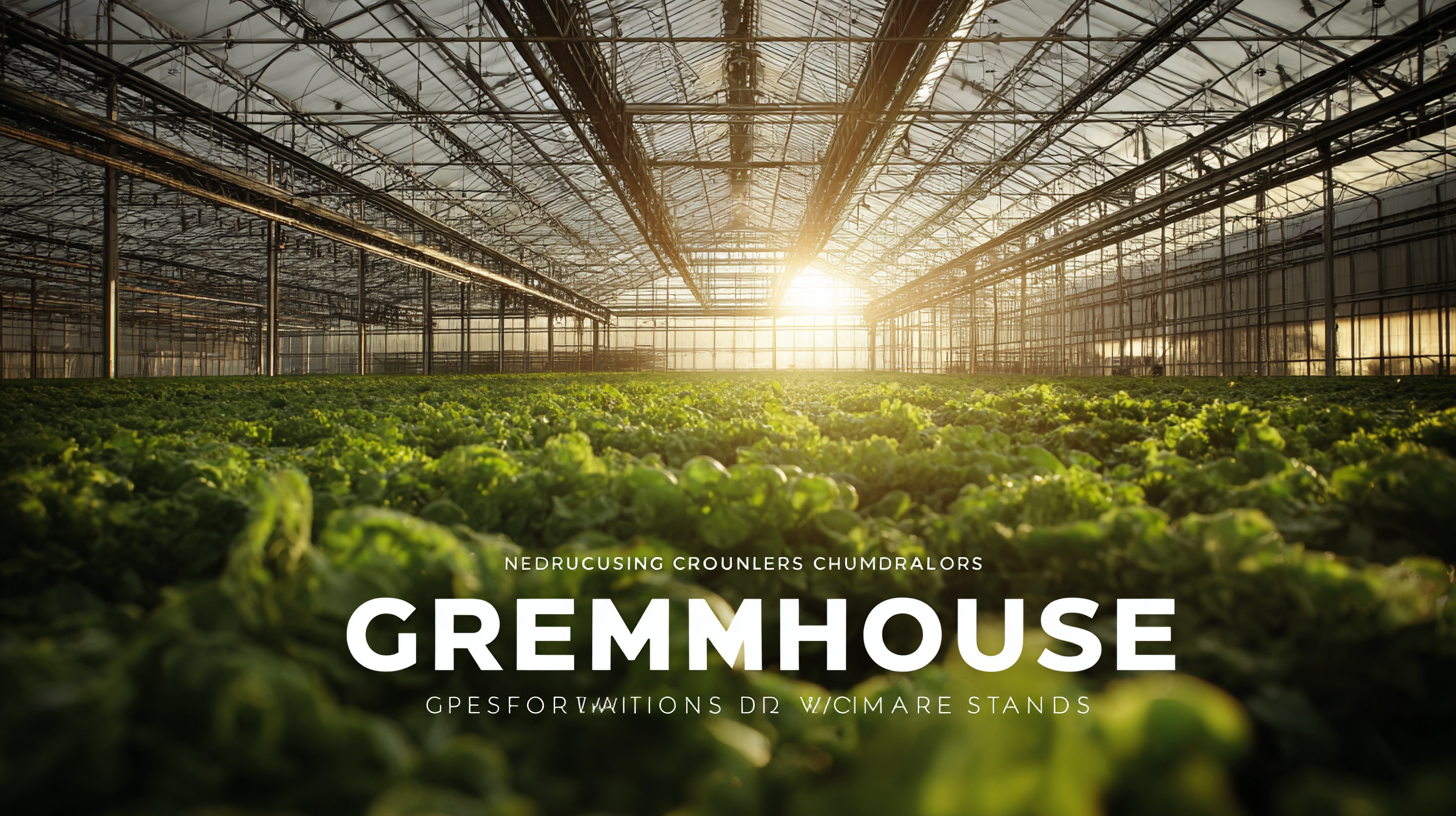
Navigating the Challenges of Best Commercial Greenhouse Production Standards
In recent years, the commercial greenhouse industry has gained significant momentum, driven by an increasing demand for sustainable agricultural practices and higher crop yields. According to a report by Grand View Research, the global commercial greenhouse market is expected to reach USD 40.90 billion by 2025, growing at a CAGR of 10.1%. This surge underscores the critical importance of selecting high-quality manufacturers who adhere to the best production standards in order to optimize both efficiency and profitability. As growers navigate the complexities of sourcing materials and technologies, understanding the various challenges in commercial greenhouse production becomes paramount. From climate control systems to irrigation technologies, the ability to partner with a reputable manufacturer can directly impact the success of greenhouse operations, ensuring that they are both productive and environmentally sustainable.

Understanding the Importance of Commercial Greenhouse Production Standards
Commercial greenhouse production standards are essential for ensuring the health and safety of crops while also optimizing productivity. According to the USDA's National Organic Program, adherence to these standards can improve crop yield by as much as 20% while reducing the incidence of plant diseases. This is critical, especially in a market where consumer demand for organically grown produce continues to rise, projected to increase by over 10% annually.
Furthermore, implementing established standards helps greenhouse operators comply with regional regulations, which can vary significantly. For example, the Global G.A.P. standards focus on safe agricultural practices, environmental sustainability, and worker safety. Reports indicate that producers who meet these benchmarks often benefit from improved market access and premium pricing opportunities. By prioritizing the establishment of effective production standards, growers can not only enhance their operational efficiency but also build consumer trust in their products, ultimately leading to a more sustainable and profitable greenhouse operation.
Navigating the Challenges of Best Commercial Greenhouse Production Standards
This bar chart illustrates the importance of various production standards in commercial greenhouse operations, highlighting their impact on yield, sustainability, and economic viability.
Key Challenges Faced by Greenhouse Producers in Achieving Standards
In the pursuit of excellence in commercial greenhouse production, producers encounter a series of challenges that can hinder their ability to meet established standards.
One significant issue is the variability in environmental conditions, which can impact plant growth and quality.
Factors such as temperature fluctuations, humidity levels, and light intensity require constant monitoring and adjustments. This variability can lead to inconsistencies in crop yield, making it essential for producers to implement robust environmental control systems.
Tip: Invest in advanced climate control technology to ensure optimal growing conditions. Utilizing sensors and automated systems can minimize human error and help maintain a stable environment for your crops.
Another challenge is the increasing demand for sustainable practices.
Greenhouse producers must balance economic viability with eco-friendly approaches. This often involves integrating renewable energy sources and adopting water conservation strategies.
Achieving this goal can require significant upfront investment and a willingness to adapt traditional practices.
Tip: Consider partnering with local agricultural extension services to gain insights into sustainable techniques that can reduce costs and enhance your greenhouse's ecological footprint.
Building a network with fellow producers can also provide valuable support in navigating these practices.

Digital Solutions for Enhancing Greenhouse Production Efficiency
In the realm of commercial greenhouse production, digital solutions are proving essential for enhancing efficiency and sustainability. With the rise of precision agriculture technologies, farmers can now utilize various tools to monitor and optimize their greenhouse environments. These innovations not only streamline operations but also help in implementing regenerative agriculture practices, significantly reducing resource usage such as water and fertilizers. By embracing these digital tools, producers can achieve higher yields while minimizing environmental impacts.
The integration of Artificial Intelligence (AI) in food manufacturing further underscores this shift towards a smarter agricultural framework. AI-driven approaches are capable of optimizing production processes, reducing waste, and ensuring quality assurance, all of which contribute to a more sustainable food supply chain. As digital agriculture investments continue to grow, the potential for improving food security and enhancing smallholder farmer resilience becomes increasingly evident, paving the way for a more efficient and environmentally friendly agricultural landscape. Through the adoption of digital technologies, the commercial greenhouse sector is well-positioned to navigate the challenges of modern production standards while meeting the demands of a growing global population.
Best Practices for Implementing Sustainable Greenhouse Operations
Sustainable greenhouse operations are essential for meeting the growing global demand for food while minimizing environmental impacts. One effective approach is implementing integrated pest management (IPM) techniques, which reduce pesticide use by promoting natural predators. According to the U.S. Department of Agriculture, greenhouses that adopt IPM practices can decrease pesticide application by up to 50%, leading to healthier crops and ecosystems.
Another best practice is optimizing energy use through advanced greenhouse technologies. For instance, climate control systems that automatically adjust temperature and humidity can increase energy efficiency by 30% to 50%. Research from the Netherlands has shown that greenhouses equipped with energy-efficient systems can reduce overall operational costs by up to 25%, allowing growers to invest more in sustainable practices. By focusing on these strategies, producers can not only enhance their productivity but also contribute to broader sustainability goals, aligning with the industry's commitment to reducing its carbon footprint.
Evaluating the Impact of Compliance on Business Success in Greenhouses
 Compliance with best commercial greenhouse production standards is increasingly recognized as a critical factor influencing business success in the horticultural industry. According to a report by the American Society for Horticultural Science, greenhouses that adhere to established production standards saw an average increase of 20% in crop yield and a 15% reduction in operational costs. This data underscores the financial benefits of compliance, as it not only boosts productivity but also enhances the overall efficiency of resource utilization.
Compliance with best commercial greenhouse production standards is increasingly recognized as a critical factor influencing business success in the horticultural industry. According to a report by the American Society for Horticultural Science, greenhouses that adhere to established production standards saw an average increase of 20% in crop yield and a 15% reduction in operational costs. This data underscores the financial benefits of compliance, as it not only boosts productivity but also enhances the overall efficiency of resource utilization.
Moreover, companies that prioritize standard compliance are likely to experience improved market competitiveness. A study conducted by the Greenhouse Grower revealed that 74% of successful greenhouse operations credit their compliance efforts for higher customer satisfaction rates. This is particularly important in today’s consumer-driven market, where sustainability and quality are paramount. As more consumers demand eco-friendly and responsibly sourced products, greenhouses that align with recognized production standards are not only meeting regulatory expectations but also positioning themselves advantageously for future growth. Understanding these impacts can help greenhouse operators navigate compliance challenges while reaping significant rewards, both financially and in establishing a reputable brand.
